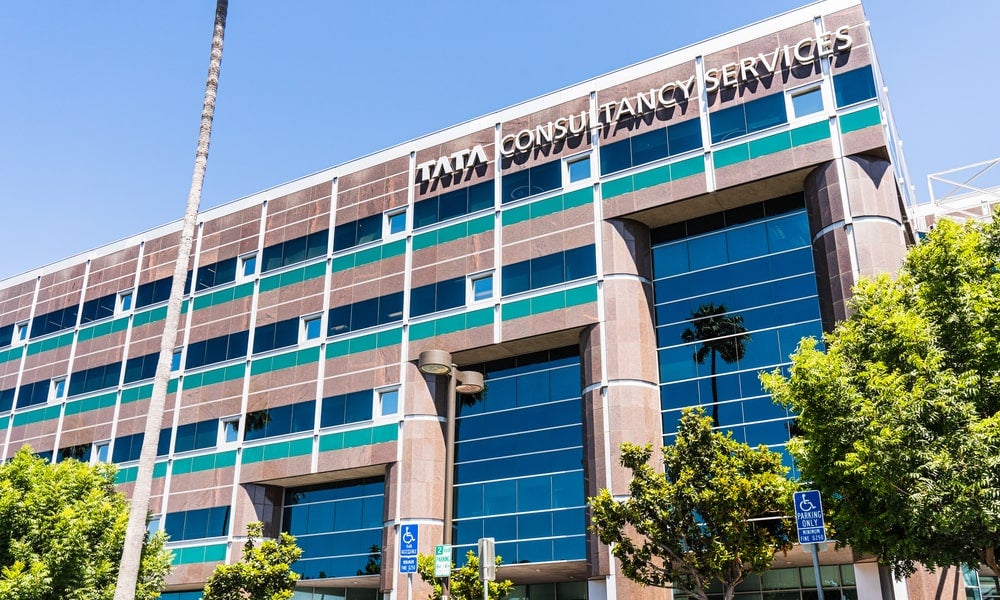How a family firm in India became a global conglomerate
The Tata Group is a household name in India and most parts of the world, and its success story is a masterclass in digital transformation
The Tata Group is a family-owned corporation that dates back 150 years. But its growth was turbo-charged in the 1990s, when it grew from a US$5 billion ($6.8 billion) Indian group in 1990 to a global conglomerate, with annual revenues of US$122 billion ($166 billion) by 2020.
The transformation coincided with India’s economic liberalisation – and was made possible by Tata Group’s wholehearted embrace of new technologies and a business excellence framework.
In Dancing Elephants and Leaping Jaguars, Sunil Mithas details Tata’s 20-year transformation. Now a world-class scholar and a professor at the University of South Florida, Mithas worked in the office of the CEO of Tata Ryerson during the mid 1990’s.
Tata Ryerson, a joint venture between Tata and US-based Ryerson, adopted an SAP enterprise software system to get greater visibility of material flows and be more responsive to end-users of steel. The company created a new service centre industry in India. Before then, steel companies had very little visibility of the end-users of the steel and their unique needs.
Mithas is a visiting professor at UNSW Business School and he shared his insights into the Tata Group with BusinessThink.
"Digital transformations cannot be accomplished with a magic wand"
SUNIL MITHAS
BusinessThink: What are the essential ingredients for successful digital transformation?
Mithas: You need a framework. When Ratan Tata became company chairman in the early 1990s, he adopted a model of performance excellence from the US, known as the Baldridge criteria of performance excellence. What this model does is evaluate companies on several dimensions.
Number one is how do you manage leadership? Also, how do you create a strategy? How do you look at customer focus? How do you manage your human resources? How do you manage your information technology and knowledge assets? How do you manage your business processes?
And finally, the criteria are used to look at your performance. In 1995, the score of the Tata Group of companies on average was close to 200 out of 1000. This low score served as a wake-up call for Tata companies which used to think they were world-class. They were doing well in India, partly because the market was quite protected at the time.

Ratan Tata set a target to increase scores significantly, and urged the companies to become world-class in their business processes to earn scores of 600, or beyond. That required substantial changes within the group and Tata Steel became the first company to finally cross the 600 mark in the year 2000. What is remarkable about the Tata group’s transformation is that subsequent chairmen, including Natarajan Chandrasekaran, continue to use that model even after Ratan Tata stepped down.
BusinessThink: What about the digital part of that strategy?
Mithas: Increasingly, digital has become important to compete in the marketplace. If you think about automotive companies – General Motors, Ford – they are having to compete with the Teslas of the world. Marriott is now having to think about how to compete with Airbnb.
Almost every industry is facing these headwinds, coming from competitors who are digitally savvy. Regardless of which functional area you look at, whether HR, marketing, or supply chain management, managers in these areas have to become more digitally savvy to continue to be relevant in the marketplace.
People used to say, you need to have numeracy and literacy, and basic knowledge of accounting and finance to succeed. I think digital skills have become another essential component of success for almost any manager. For leading companies of today, digital is part of their DNA. Starbucks had to go through a digital transformation. It’s a coffee company, but they think of themselves as a technology company now.

BusinessThink: How should companies go about it?
Mithas: No matter what transformation we are talking about, leadership must be heavily engaged and a leadership system has to be in place. So top leaders cannot just have slogans; they need to be genuine and personally visible in leading these efforts. You think about companies such as Amazon, or Apple; you immediately think of Jeff Bezos, or Steve Jobs.
Then there is execution and governance processes. How do you change the whole mindset of a company? And execute these things on a daily or monthly basis.
The third thing is analytics. Business analytics can help us to ascertain whether we are doing well by our employees, customers, suppliers, and business partners. So, you need analytics in each of these areas to assess your performance and improve on that.
And then we must ask, do we have the discipline? Most companies tend to follow fads, such as business process re-engineering and Six Sigma. Tata companies show the discipline to stick with the Tata Business Excellence Model for measurement. One must have discipline and not just follow the fads to succeed in the long run.

BusinessThink: What are some examples of digital transformation disasters?
Mithas: Take the example of Borders. In the late 1990’s, when online retailing was becoming more common, they had a choice. They could have created their own website. Guess what they did? They actually outsourced their website to Amazon.
It took a while for Borders to realise its mistake of outsourcing their key capability – how they sell books – to Amazon. And Amazon was learning at their expense. By the time they realised it was too late. The same mistake was made by Toys R Us. So, if you wonder why Amazon has become such a powerful company in the world, it learned good lessons from Toys R Us, Borders and Target.
But digital doesn’t always translate. When Ron Johnson (who pioneered Apple concept stores and the ‘genius bar’) took over as CEO at US discount retailer J.C. Penney, he brought lots of people from outside. And these people had many fancy ideas to create an Apple-like experience in J.C. Penney. Some J.C.Penney employees said: “Our existing customers might not like these ideas. Why don’t we do a pilot?”
But the CEO rolled out initiatives across hundreds of their stores in one go. And it backfired. Within one year their sales had gone down dramatically. The board accepted the 'resignation' of the CEO and brought back the former CEO to fix the company.
Just because someone is successful at Apple doesn’t mean that this experience will necessarily translate in a very different environment. Digital transformations cannot be accomplished with a magic wand. Like all transformations they require hard work, sustained engagement of leaders and disciplined governance processes.
